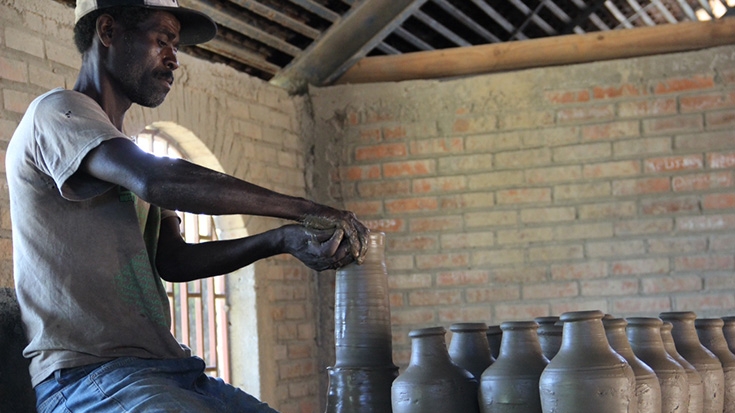Haiti welcomed more than one million visitors last year. Almost half of them were long-stay tourists, while over 600,000 were cruise-ship passengers who visited the magnificent beaches in Labadee, along the same coasts where Christopher Columbus landed in 1492.
Tourism in Haiti is certainly on the rise, with 20 percent more long-stay tourists than in 2013. The Ministry of Tourism recently launched a new advertising campaign, “Haiti: Live the Experience,” and is putting a tourism development plan in place to reposition Haiti, formerly known as the Pearl of the Antilles, as a premier destination in the Caribbean.
Its rich cultural heritage and festivals make northern Haiti the ideal location to benefit from this growth. With its paved, tranquil, palm-tree lined roads where residents stroll or play dominoes, the small commune of Milot is the gateway to the National History Park. At the end of the main street lie the ruins of Sans-Souci Palace, against a verdant backdrop where young people study in the shade, perched on the old stones.
This vantage point provides a gentle, sweeping view of the Massif du Nord mountain range, the lush vegetation, and the winding road that leads to the Citadelle Laferrière, a UNESCO-designated World Heritage Site. Whether on foot or by donkey, it takes less than 40 minutes to reach this imposing fortress that overlooks Cap-Haïtien, the country’s second largest city and capital of the North. A direct flight from Cap-Haïtien to Miami, a special incentive designed to attract tourists, has been available for several months, and the national highway linking the capital to Cap-Haïtien has been rehabilitated.
Connecting artisans with tourists
However, proximity to the sites is providing very little benefit for surrounding communes such as Milot and Dondon, and not enough for Cap-Haïtien, which, despite its rich historical heritage, is grappling with a population boom that is not only compounding such urban challenges as the lack of sanitation, street lights, and site maintenance, as well as traffic problems and the proliferation of informal markets, but is also preventing this city from meeting tourism needs.
Sylvie Débomy, Senior Urban Planner at the World Bank, notes that “although the communes of Milot and Dondon are located within the perimeter of the National History Park, they lack the capacity to accommodate the growing number of tourists, and are therefore unable to fully benefit from the economic returns that this cultural tourism could provide to the area and these residents.”
The experts believe that many small-scale artisans from Cap-Haïtien and the small towns of Milot and Dondon, which are near the historical sites, could be integrated into the tourism value chain to promote growth that benefits everyone.
Luckner Monpoint is one of these artisans. This 30-year-old director of SOCOP, an old pottery workshop cooperative, is determined to restructure the company to provide more jobs to residents in the community, offering 40 permanent jobs and others on a rotating basis. The potters, 27 of whom are women, are paid for each item and do not receive fixed wages.
With sufficient cofinancing, he could rebuild the oven that was destroyed during the 2010 earthquake to produce 205,000 high quality items each year, up from 150,000, and generate annual earnings of 800, 000 gourdes. His company produces a wide variety of items: bricks, roof tiles, floor tiles, flower pots, pitchers, ashtrays, statuettes, and jugs.

